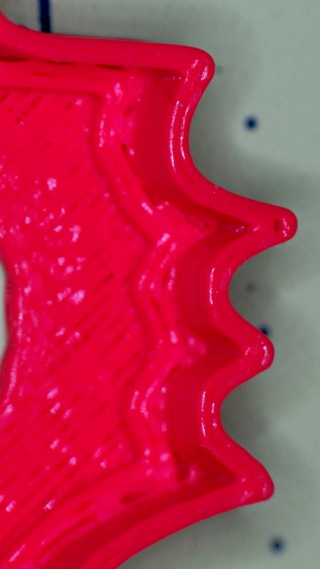Single Wall Calibration Leads to Under-Extrusion
Posted: Fri Sep 01, 2017 12:59 am
When I use a new filament, I've been "calibrating" my extrusion settings by printing a small open cube (no top, bottom, or fill) with a single pass perimeter. I then measure that, and adjust my extrusion multiplier until I get the correct wall thickness. I have a MakerGear M2E, with a 0.35 mm nozzle. With 0.2 mm layer thickness, I'm shooting for a 0.4 mm width. I'm currently using eSun PLA, and the extrusion multiplier that gives me that wall thickness is 0.94.
The problem is that when I than go to actually print something, I get defects that are consistent with under extruding. I get tiny holes in the top layers where it is cross-hatching, and sometimes even on the bottom, despite some extra "squish" there to get good adhesion. I typically print with 3 or 4 perimeter passes, and again, on the top layer, you can see places where the perimeter extrusions are not fused together.
The test structure I'm working with is one I downloaded to test bridging. One thing that may be part of the issue is that the "top" of the print where I see the defects isn't the highest layer:
Is there a better way to do my calibration? I've been thinking that I could do a multiple pass perimeter on the same model & measure the combined thickness.
Is there some other setting that might be affecting things that I need to tweak? I've tried various speed settings, and it doesn't seem to make much difference.
Thanks!
The problem is that when I than go to actually print something, I get defects that are consistent with under extruding. I get tiny holes in the top layers where it is cross-hatching, and sometimes even on the bottom, despite some extra "squish" there to get good adhesion. I typically print with 3 or 4 perimeter passes, and again, on the top layer, you can see places where the perimeter extrusions are not fused together.
The test structure I'm working with is one I downloaded to test bridging. One thing that may be part of the issue is that the "top" of the print where I see the defects isn't the highest layer:
Is there a better way to do my calibration? I've been thinking that I could do a multiple pass perimeter on the same model & measure the combined thickness.
Is there some other setting that might be affecting things that I need to tweak? I've tried various speed settings, and it doesn't seem to make much difference.
Thanks!
